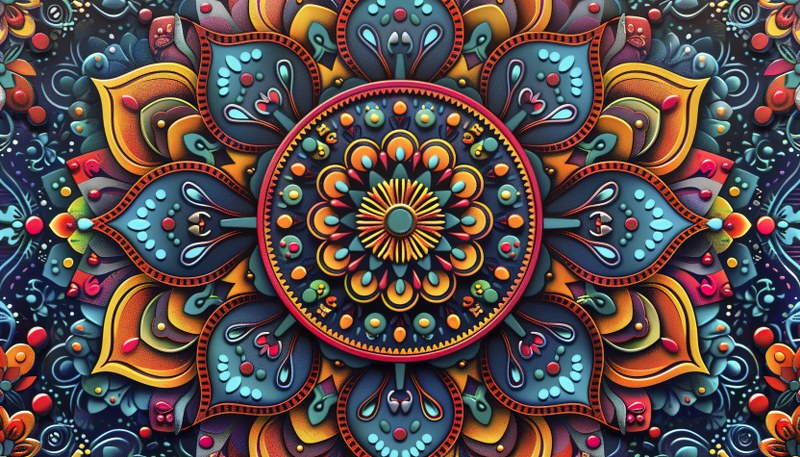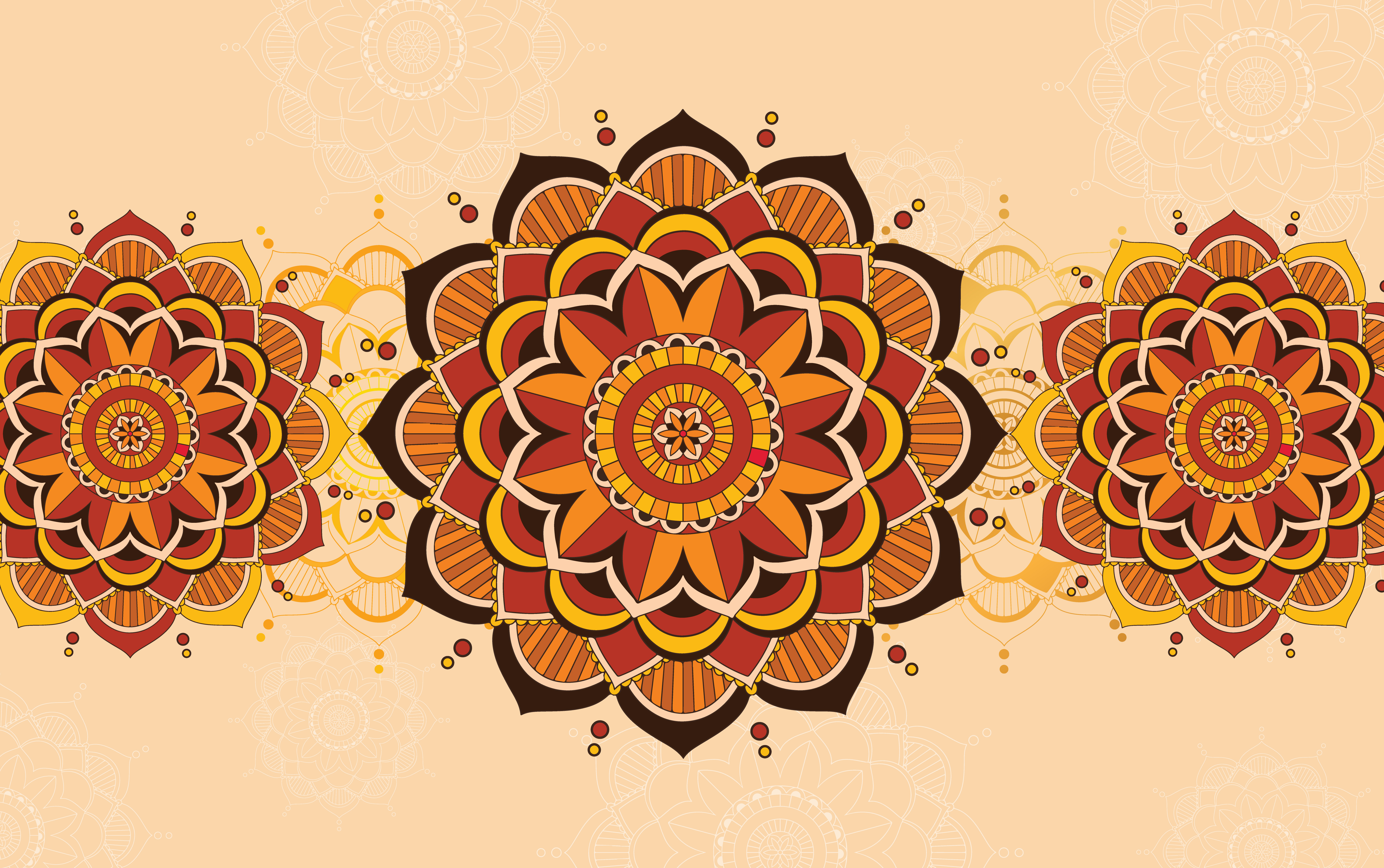Mandala art, an ancient yet timeless practice, is more than just a visual delight. In fact, it’s a journey into mindfulness, self-expression, and harmony. With its origins in Hinduism and Buddhism, mandalas have transcended their spiritual roots to become a popular art form worldwide, offering a blend of aesthetic charm and therapeutic benefits.

A Brief History of Mandala Art
Mandala, derived from the Sanskrit word meaning “circle,” has been a spiritual and ritual symbol for centuries.
- In Hinduism, mandalas are used in temple designs and meditation to represent the universe.
- Similarly, in Buddhism, Tibetan monks create sand mandalas, meticulously crafted and ritually destroyed to symbolize impermanence.
- Moreover, in modern psychology, Carl Jung introduced mandalas as a tool for understanding the self and exploring the subconscious.
Why Mandala Art is Popular Today
Mandala Art is not just about tradition; on the contrary, its modern-day applications have made it a global phenomenon.
- For instance, creating or coloring mandalas can reduce stress and anxiety, offering therapeutic benefits.
- Additionally, artists use mandalas to explore symmetry, patterns, and color combinations, making it a unique creative outlet.
- Furthermore, mandalas are often used in meditation to enhance focus and tranquility, turning them into a mindfulness practice.
The Symbolism of Mandalas
Every aspect of a mandala has profound meanings, and yet, they remain universally relatable.
- Circles, for example, represent eternity, unity, and completeness.
- The Center Point symbolizes the origin of all creation, grounding the design.
- Meanwhile, patterns and layers depict the journey from chaos to harmony.
- Finally, colors in a mandala hold specific significance. For instance, blue symbolizes tranquility, while red represents passion.

Mandala Art as a Tool for Healing
In Art Therapy
Mandalas help individuals express emotions, especially for those struggling with trauma or anxiety. Through this process, creating and focusing on mandalas aids in emotional healing.
In Chakra Healing
Mandalas are often used to balance energy centers (chakras) in the body.
- For example, a red mandala stimulates the root chakra, promoting grounding.
- Similarly, a green mandala heals the heart chakra, enhancing compassion.
The Connection Between Mandalas and Nature
Nature itself creates mandala patterns, which is why they inspire countless artists.
- Flowers, like sunflowers and daisies, showcase radial symmetry.
- Likewise, spider webs reveal intricate designs.
- Even snowflakes feature unique geometric patterns.
By observing these natural wonders, you can find inspiration for your own mandala creations.
Mandala Art in Popular Culture
From tattoos to yoga studios, mandalas are everywhere!
- For instance, tattoos often symbolize balance and spiritual growth.
- In addition, mandala designs create a calming environment in yoga and meditation spaces.
- Not to mention, digital art on social media features mesmerizing mandala animations.
Conclusion
Mandala art is more than just a creative pursuit; in reality, it’s a gateway to inner peace and self-discovery. Whether you are drawing intricate designs, coloring pre-made templates, or simply admiring the patterns in nature, mandala art offers endless possibilities to explore harmony and mindfulness.
Start your journey into the enchanting world of mandala art today, and soon, you’ll experience its transformative power!



